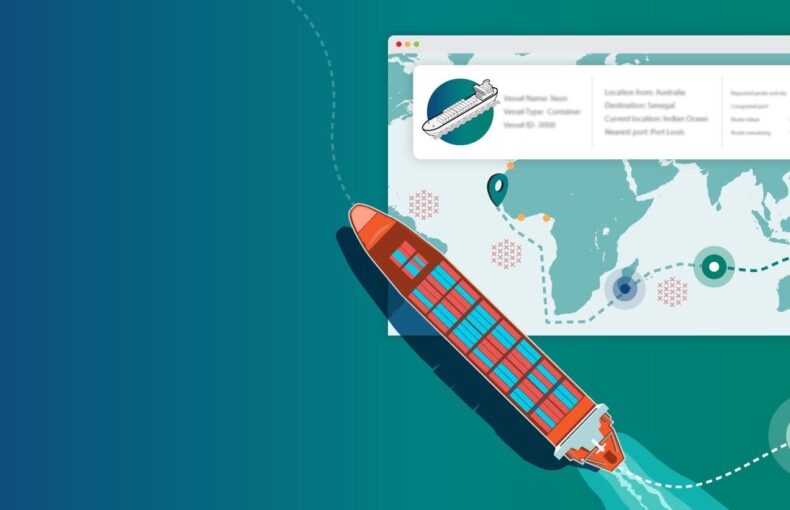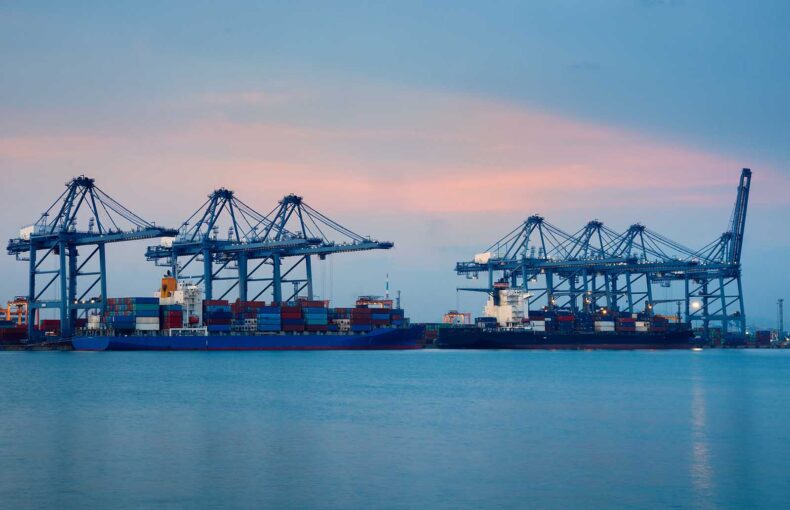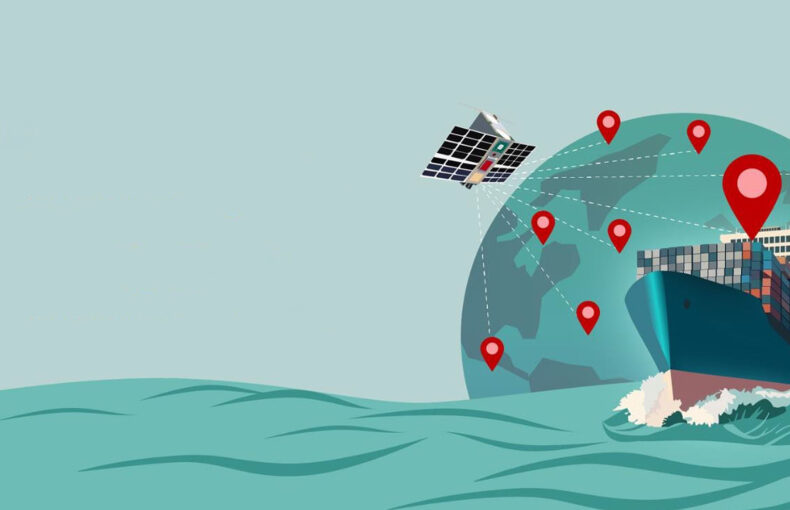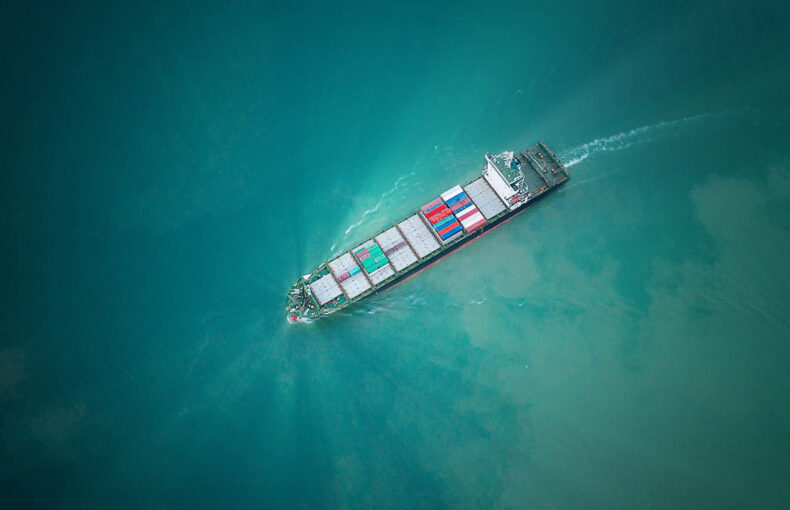Global shipping for the future: Improving the efficiency and sustainability of the industry
The growth of global trade has been relentless over the past half-century.
As noted by the BBC, “In the early 1960s, world trade in merchandise was less than 20% of world economic output … Now, it is around 50%.” The standardized shipping containers and the vessels that transport them around the globe are the foundation of that evolution.
But such profound economic growth has not come without a price. The global shipping industry is a significant contributor to atmospheric carbon emissions, while its large infrastructure footprint requires scrutiny regarding environmental impact in and around ports.
The reality of climate change and habitat loss must be faced. The industry is pursuing innovative solutions to provide greater sustainability and environmental protection for the world moving forward.
Ongoing Logistical Challenges to Global Shipping
The global supply chain is the backbone of the modern global economy. The decision-making of manufacturers is built around not only local production costs but also access to transportation infrastructure. It is now commonplace for major universities to offer supply chain management (SCM) degrees.
One dilemma facing logistics managers is port congestion. Water transport is the cheapest form of transportation. Ports demand significant investment, but the world’s oceans do not require construction and maintenance. Heavy loads can be moved on water at low costs, which is why the latest generation of super container ships have a full-load deadweight of about 220,000 tons while carrying over 20,000 standard 20-foot equivalent units (TEUs).
The chokepoint of this system is access to ports. While the logistical perils of the global supply chain were captured by the saga of the Ever Given, the ship that got stuck in the Suez Canal, the more enduring, less prominent challenge is port congestion. Facilities around the world—especially in the United States, the consumer engine of the world marketplace—have been struggling with the issue for years.
The repercussions of the COVID-19 pandemic have only heightened the stress on the system. It was so serious that the president of the United States had to focus specifically on the backlog at the Port of Los Angeles in the first year of his administration.
According to Reuters, the challenge is still ongoing: “Efforts to speed up the movement of goods around the world have yet to solve the supply chain bottlenecks caused by surging demand for retail goods and pandemic-related lockdowns, the latest shipping data shows. Delays at U.S. major ports have been particularly severe, but knock-on effects have also been felt around the world.”
Another Challenge: Environmental Impact
Another long-term challenge facing the industry is its environmental impact. Though using the world’s waterways for transportation is cheaper, that does not mean it is without cost.
Maritime shipping is currently responsible for nearly 3% of the total annual emissions of global greenhouse gasses, which is more than the airline industry. The United Nations is seeking to get carbon emissions down to half of the levels emitted in 2008 by 2050. Without action, emissions could increase by 50 to 250% by 2050 according to the International Maritime Organization (IMO).
Luckily, many of the solutions that can ease the systemic logistical logjam shaping the shipping industry will also curtail its environmental impact.
For example, more efficient port operations will not only move cargo faster to the next stage of the supply chain—land and air transport systems—but also cut emissions while doing so. The less time ships are stuck in a holding pattern waiting to get into port equals fewer idling diesel engines.
Operations Become Smarter
The emerging solutions are not just about better physical infrastructure at ports, such as more berths and better equipment for unloading. It’s about using a wide range of tech to make the transition to “smart ports.”
One vital aspect of this transition is digitization.
As outlined in United Nations Conference on Trade and Development’s report Digitalizing the Port Call Process, “Digitalization is increasingly playing a pivotal role in environmental, social and governance (ESG) topics by accelerating sustainable initiatives and helping to monitor and mitigate emerging risks and pressures, for example, in tackling environmental pollution and climate change. Digitalization and the ability to connect different maritime transport actors to enable greater efficiency and to reduce their collective carbon footprint is an obvious example of the benefits for the maritime sector.”
Better Bureaucracy
For example, standard e-bill of lading (eBL) is quickly being adopted. By digitizing the most important documentation that shippers and customs officials deal with, the speed and accuracy of required information sharing are increased, meaning ships get into port and unloaded faster.
The industry is quickly pushing to adopt this new tech and seeking to establish standardization around the globe.
For example, the Baltic and International Maritime Council (BIMCO) is fully supportive, as its Head of Contracts and Clauses Grant Hunter explains, “Establishing a globally accepted standard for electronic bills of lading is a critically important step for the successful digital transformation of our industry. BIMCO is widely known to regulators, banks and insurers for its standardised paper bills of lading such as CONGENBILL and CONLINEBILL. We want to take that same harmonised approach to facilitating trade by developing an eBL standard.”
Digitization is picking up steam across the industry. The Digital Container Shipping Association (DCSA) was created in 2019 by several of the world’s most important container-shipping companies to help create “the technological foundation for interoperable IT solutions. Together with our member carriers, DCSA creates vendor-neutral, technology-agnostic, standards for IT and non-competitive business practices. By working towards the widespread adoption of these standards, our aim is to move the industry forward in terms of customer experience, efficiency, collaboration, innovation and respect for the environment.”
Knowing Where All the Moving Parts Are at All Times
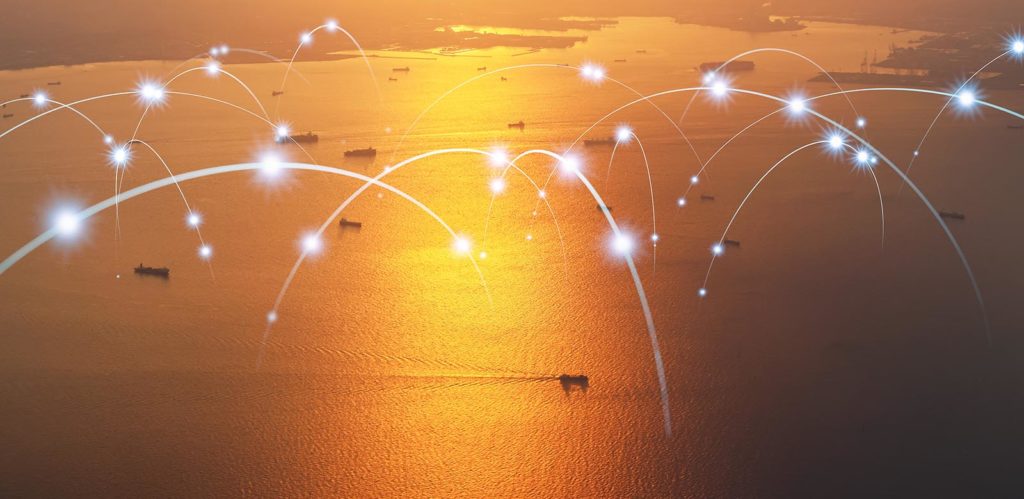
Another area of the transition to more tech-driven operations is the ability to monitor the precise locations of ships with Automatic Identification System (AIS) maritime data. The ability to engage in global real-time vessel tracking has several uses that can increase efficiencies and thereby curtail the environmental impact of global shipping.
Required by the International Maritime Organization (IMO) for vessels over 300 gross tons, it was first introduced as a way to prevent collisions at sea. Over half a million ships have AIS systems that are linked to satellites, providing full-time global tracking of ships.
Using maritime data not only means ships can be monitored when in close proximity to other vessels at bottlenecks in and around port entrances, but can also warn them away from approaching protected areas like nature reserves or military installations, which will smooth entries into harbors and better coordinate traffic. Density Maps are a great tool in assessing the risk of ship strikes and are used to develop mitigation measures and perform analysis into the efficiency of shipping routes.
The Digitalizing the Port Call Process report makes it clear that the wave of the future is here now: “Digitalization is changing the way that actors associated with port operations operate. For example, the traditional role of a ship’s master has already begun to change with an increase in remote monitoring of a ship’s position leading to others providing advice or instructions on what speed to use or what route to take to avoid such things as weather or traffic congestion or to make an optimal arrival time at a port.”
Having an accurate record of Satellite AIS historical data also brings great benefits. By capturing the data points created by Satellite AIS tracking, the historical patterns of port operations and sea route traffic can be ascertained. Access to such insight provides a strong basis for analysis of global ship movements and post-voyage analysis, including the validation of a ship’s log. Through the use of Historical AIS data, organizations can maintain a vessel’s tracks and detect and identify oil spills. Historical AIS data establishes patterns of vessel behaviors, allowing for the prosecution of illegal actions such as entry into protected or environmentally sensitive areas. Having the ability to analyze vessel traffic patterns against seasonal changes is also crucial in providing insight into optimal ship routing.
The use of real-time and historical data has a host of follow-on impacts, including curtailing maritime traffic jams (and thereby avoiding catastrophic accidents), realizing developing short-term passage obstructions and quickly calculating the best route deviations, and preventing vessels at anchor with engines running.
As the Digitalizing the Port Call Process report makes clear, penetration of tech solutions into the shipping industry is firmly established and picking up speed: “The uptake of digitalization in the maritime sector has been increasing steadily. In 2017, the theme for the IMO’s World Maritime Day was … connecting ships, ports and people. The IMO’s e-Navigation initiative is ongoing, as is its work on digital ship reporting. At the same time, Maersk and IBM have been working on a significant collaboration to bring blockchain technology into the maritime sector to massively reduce the reliance on paper documents. In ships and ashore, increasing amounts of relevant data are being transmitted digitally, including ship’s position and details via AIS transponders every six seconds, remote engine and machinery monitoring, and data describing the loading and details for ship’s cargo.”
An Industry Cleaning Up Its Act
There are a number of other exciting new technologies that fall under the umbrella term “green shipping” strategies for curtailing the direct pollution impact that the shipping industry can have in and around ports.
Ballast Water
The use of ballast is as old as ocean-going sailing. Modern ships use water. And dumping it in ports of call has wreaked havoc on local ecosystems, introducing invasive species. For example, the zebra mussel, which has become a significant nuisance, was introduced to North America via freighters that sailed into the Great Lakes from the Caspian and Black seas.
The IMO developed now industry-standard regulations and continues to study new technologies like chemical, thermal, and ultraviolet water treatment methods to alleviate this issue.
Shore-to-Ship Power
One simple solution long-overlooked was requiring ships to use onshore electrical power when in port. Instead of idling their engines when docked at levels sufficient to keep their internal electrical grid up and running, the solution is as simple as running a glorified extension cord to the port’s power supply. According to the U.S. Environmental Protection Agency, “Under the right circumstances when a vessel is connected to shore power, overall pollutant emissions can be reduced by up to 98% when utilizing power from the regional electricity grid, (depending on the mix of energy sources) … The assessment suggests that shore power may be most effective when applied at terminals and ports with a high percentage of frequently returning vessels, typically cruise ships and container ships.”
Since most of the world’s major ports incorporate solar and wind facilities onsite, this is one of the few “no brainer” solutions in a complex industry. It has already been adopted in North America and Europe, and hopefully will soon become the global standard.
Port Expansion of Marine Protected Areas
The need to expand port operations grows in concert with the increase of activity all along the global supply chain, but it must be balanced with the ecology in and around major harbors. A host of tech solutions, from detailed sea basin maps based on sonar readings and satellite altimetry to developing alternative shipping routes using AIS maritime data, can help identify and protect areas that are particularly vulnerable to impact.
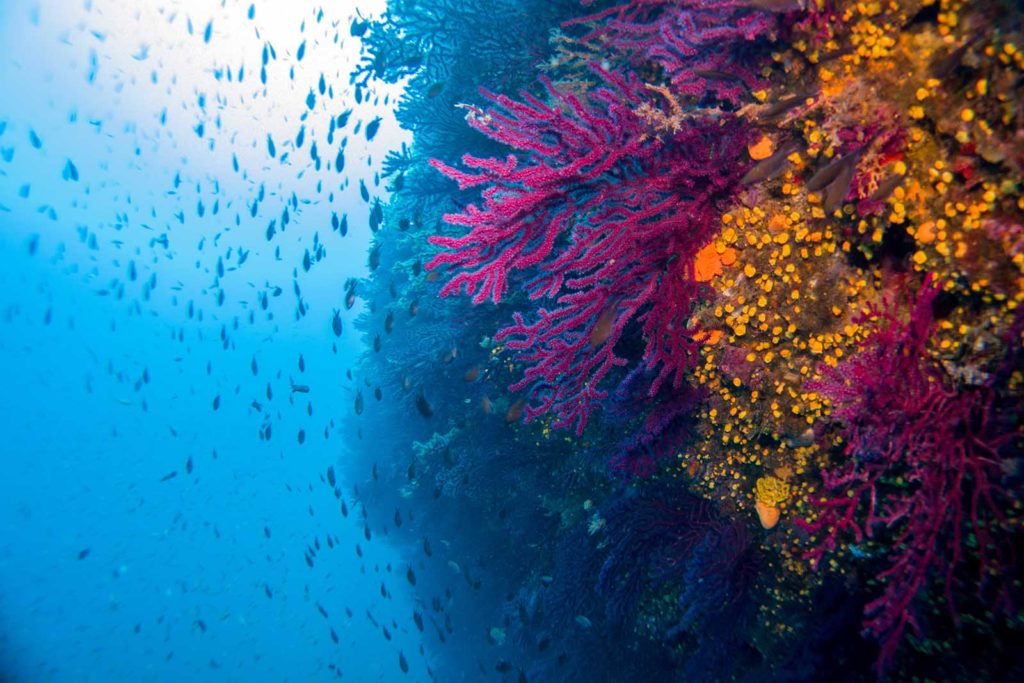
Moving Forward
Developing best practices and incorporating them into the daily operations of the shipping industry is the challenge of the future. Collecting a wide range of data on emissions, routing, and pollutants will help solve many of the challenges facing the industry, including port congestion and environmental contamination.
With tech like automated ships, electric and liquid hydrogen engines, AI optimization for packing and storage strategies, robotics incorporated into port operations, and the digital route management of ships on the horizon, the shipping industry will continue to expand its capacity and reduce its environmental impact.
 Written by
Written by